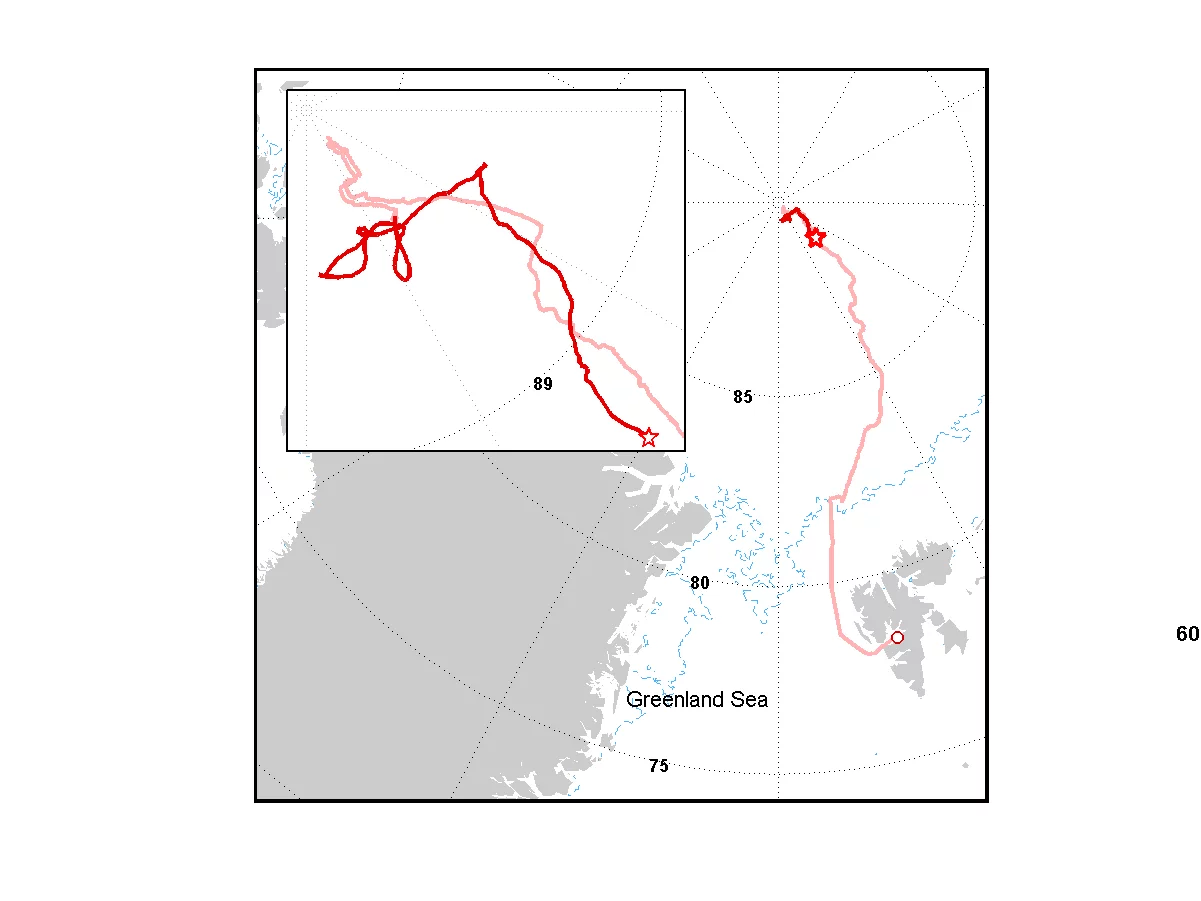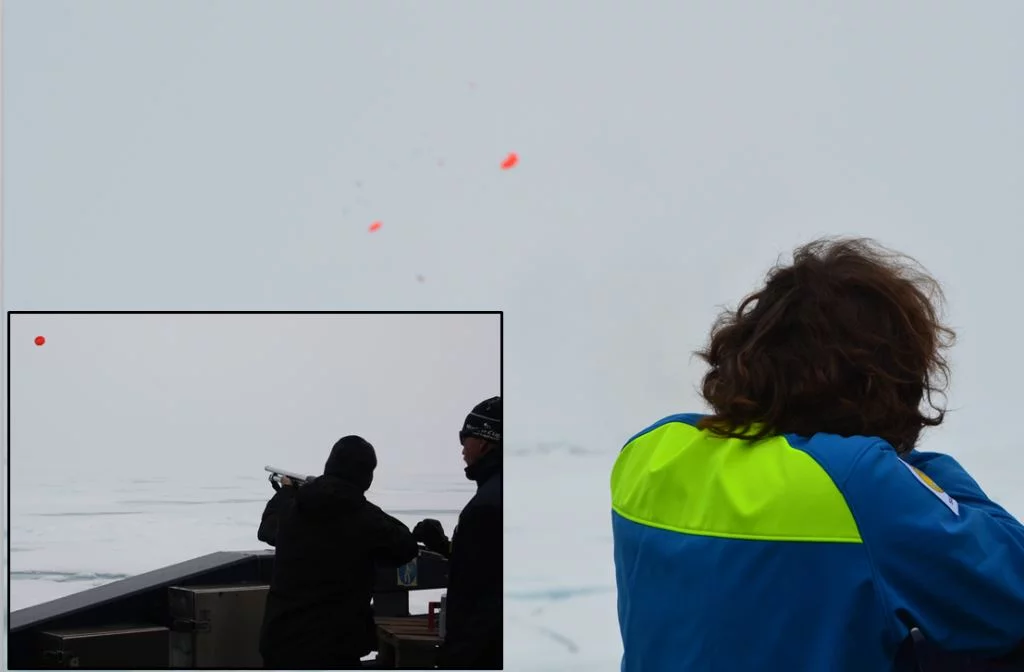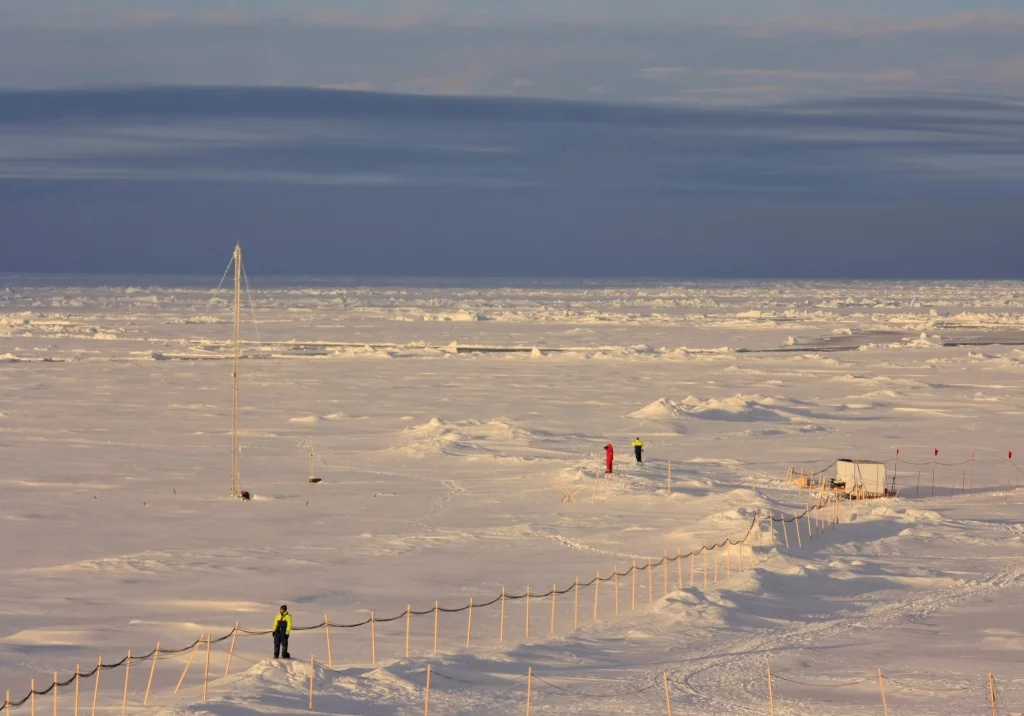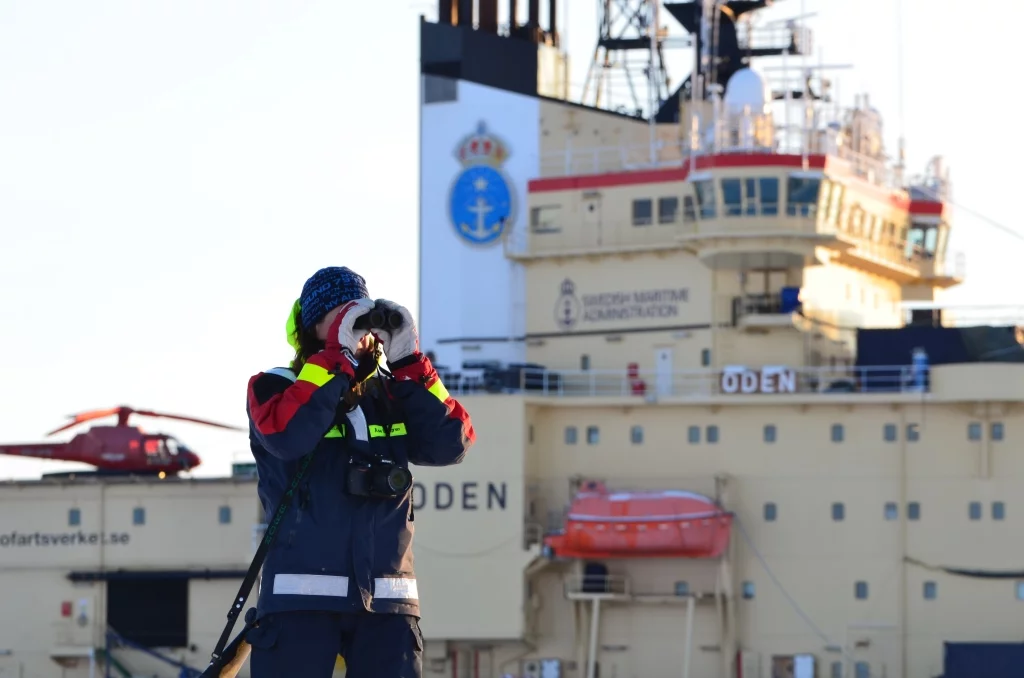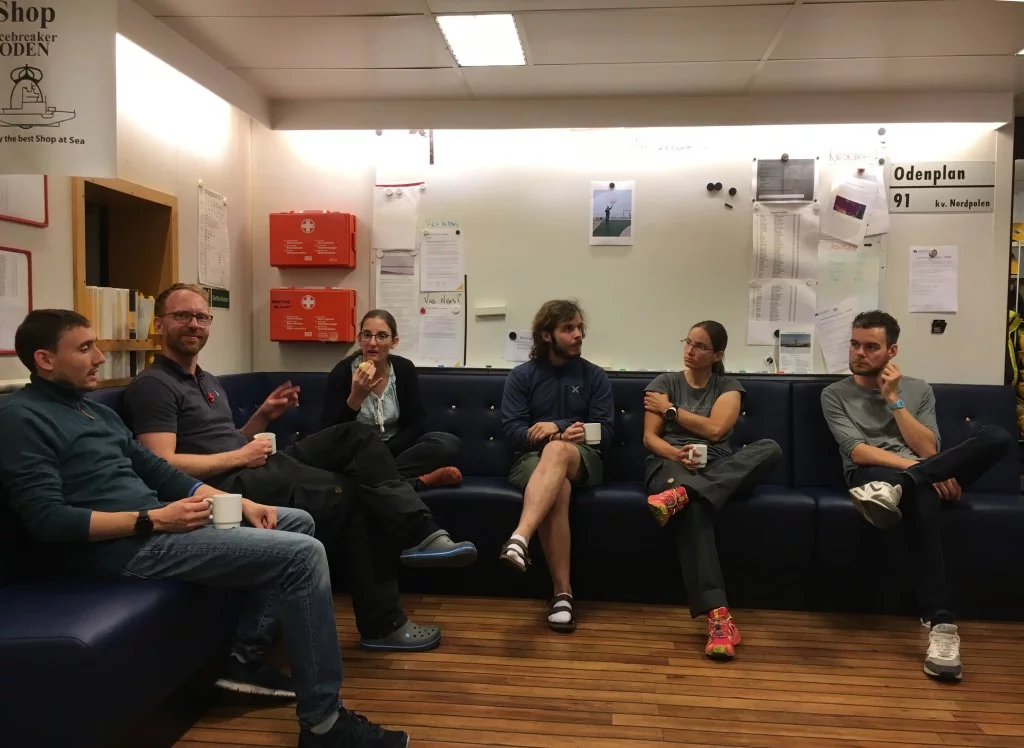Arctic Ocean Blog
9 September 2018
A normal day as a polar bear guard
by Andrea Baccarini
Current position: 88° 38′ N, 44° 54′ E
Current position: 88° 38′ N, 44° 54′ E
It is a normal day on Oden, me and Julia are working in the container checking the instruments and doing other routine operations when the phone rings. It is Ian, he wants to know if one of us could go outside to be their polar bear guard for the next few hours. We look at each other and it is soon decided that I will go. Julia has more work to do in the container and the appointment is in half an hour at the gangway, just the time to finish what I was doing, get dressed with proper outdoor equipment and pick up the rifle and the ammunition.
It may sound weird, but polar bear guards always have to carry a rifle together with spare ammunition. As atmospheric scientists we learn how to operate complex instrumentation, but we are certainly not used to operating weapons. For this reason during the transit up to the North Pole we had theoretical lessons on polar bear safety and shooting practice with clay targets, everything under the careful supervision of Lars Tano, the polar bear responsible for this expedition.
Obviously shooting is our last resort; there are a lot of other actions that need to be taken beforehand in order to scare the bear away. But, if worse comes to worst, we need to be ready. The other reason for which a “newbie” like me is allowed to guard is that I will be working at the balloon site that is the closest to the ship. This means that in case a polar bear comes we could reach the ship in just a few minutes and thus it is really unlikely that I would have to use the rifle.
Being a polar bear guard is not the most exciting job out there: you have to stand in the cold, downwind from the group, from where the polar bear is likely to approach because of the smell, looking at the horizon for several hours. On the other hand the guard job gives you a lot of time to think and reflect while contemplating this breathtaking landscape. This is one of the reasons why I often volunteer to be a polar bear guard; on a ship it is not easy to find the right moment and place to be alone with yourself thinking, there are always people around and things to be done.
In these moments, I wish I could switch off my brain and do not think about science and measurements for a while, however it is easier said than done. In the past days we have been speaking a lot about our observations, there are several puzzles that need to be solved and everyone has their own view. One of the big questions is about the source of the Aitken mode particles (20-40 nm) that we often detect. Are they transported from far away or locally produced? And if they are local, are they primary aerosols, which would mean that they are emitted directly into the atmosphere, or secondary, in which case they would be produced by condensation of vapors?
We are interested in these small particles because they represent a big fraction of the total particle number concentration and they could eventually grow enough to act as cloud condensation nuclei and actively influence the high Arctic radiative balance through the formation of clouds. During previous expeditions, some hypotheses have been formulated but, at that time, the instrumentation was not optimized to look at such small sizes of particles. For this reason it has not been possible to draw any definitive conclusion about the origin of the Aitken mode particles.
This year Michael Lawler from UC Irvine brought a TD-CIMS (thermal desorption chemical ionization mass spectrometer) to measure the chemical composition of Aitken mode particles. In addition, I’m investigating chemical and physical properties of condensing vapors to better understand sources and processes of new particle formation. These very small particles (in the size range of few nanometers) could easily grow into the Aitken mode size range when there are enough available vapors to condense on them. This means that we have the right tools to address the “origin-question”, we just need to wait for nature to do its “magic” and be ready for measuring it.
During the last period we had several interesting observations, small pieces of this big puzzle that we are trying to solve. Obviously we are far from any conclusive explanation, we are still in the middle of the campaign and we just have preliminary observations. But what we can certainly tell is that the environment here is extremely heterogeneous, with several different processes influencing high Arctic aerosols. While I’m elaborating on all these elements I realize that Ian and Grace recovered the balloon, so I join them and we head back to the ship just in time for dinner. We stayed outside only for a couple of hours but this was enough to refresh my brain with pristine Arctic air and come up with new ideas and thoughts to discuss with the other scientists on board. Similar “recreational” activities are one of the reason for which I’m enjoying so much this expedition and I will certainly miss them afterwards!
back to all blog entries
back to all blog entries


